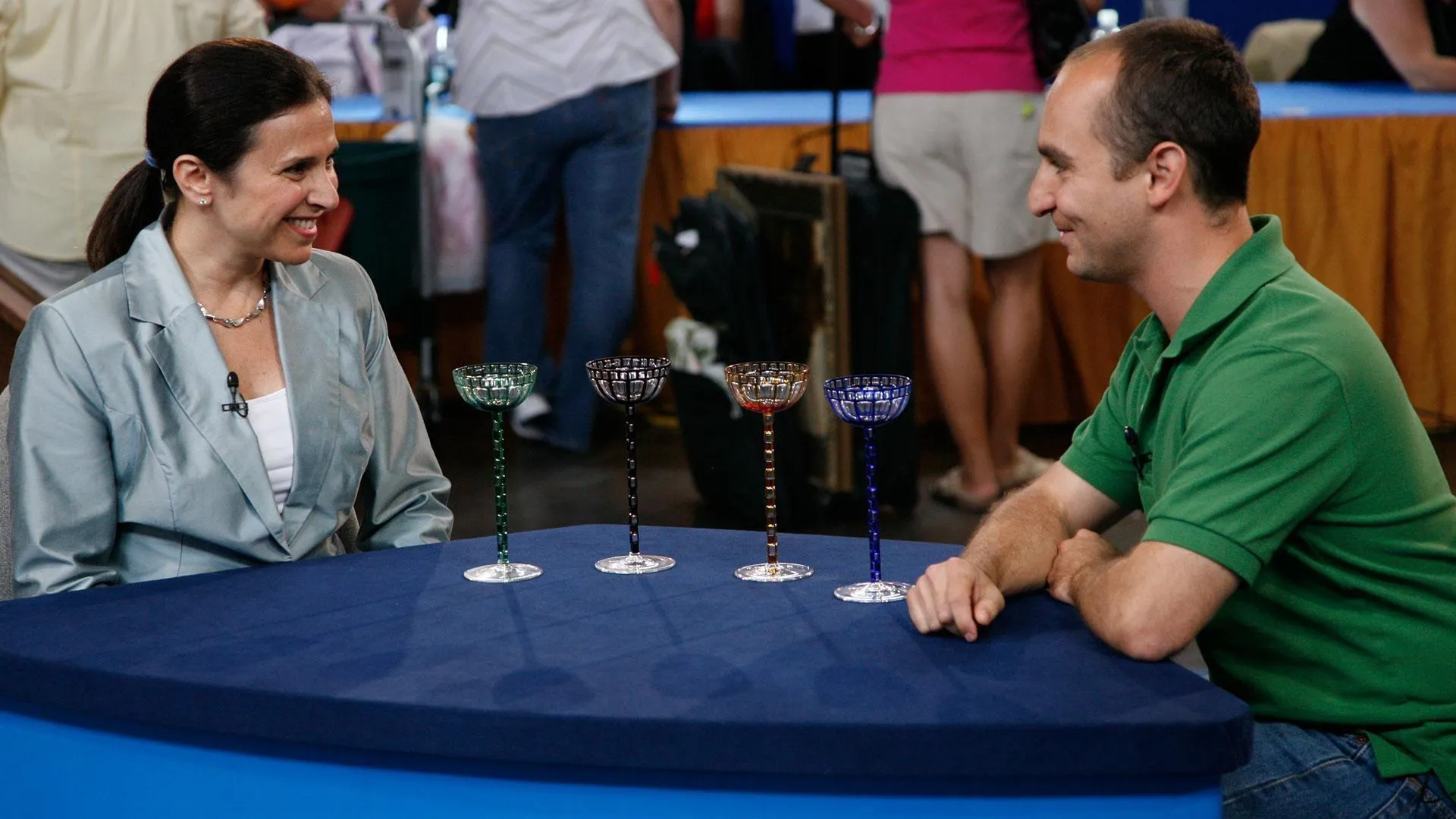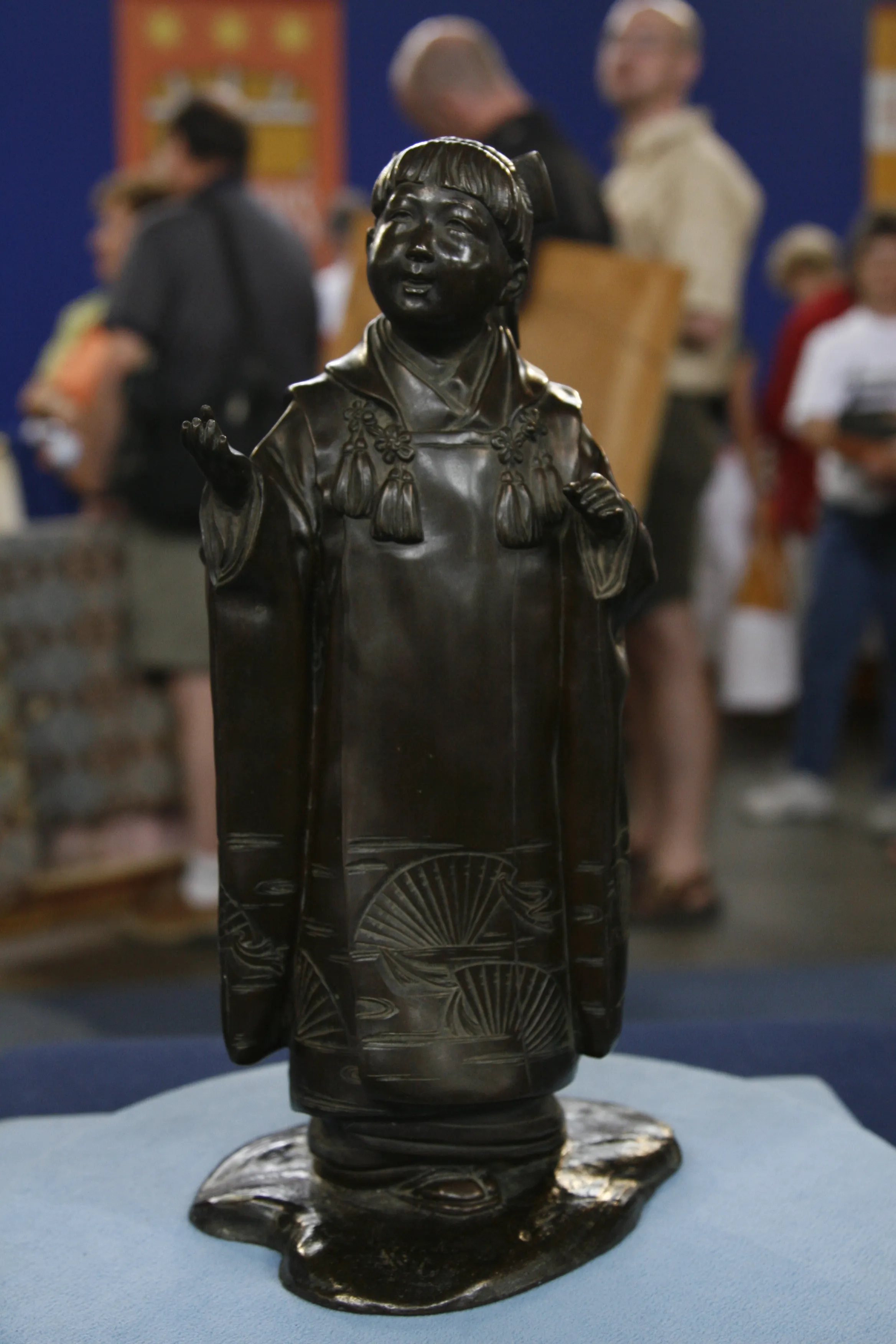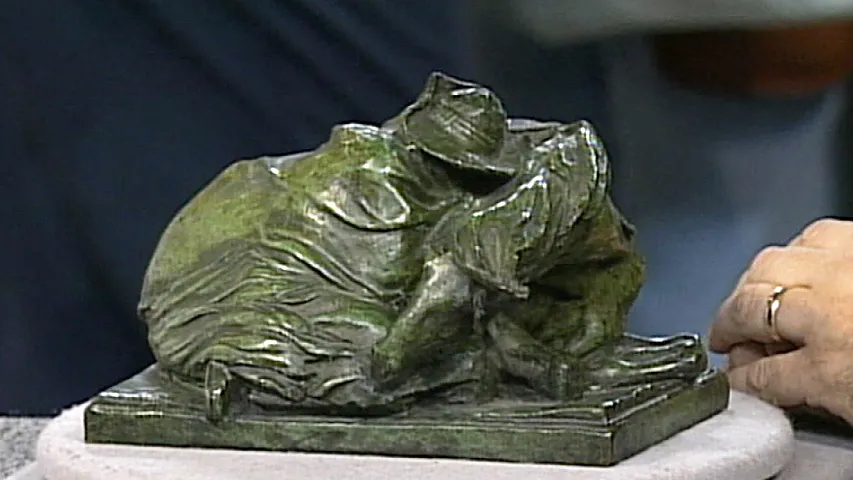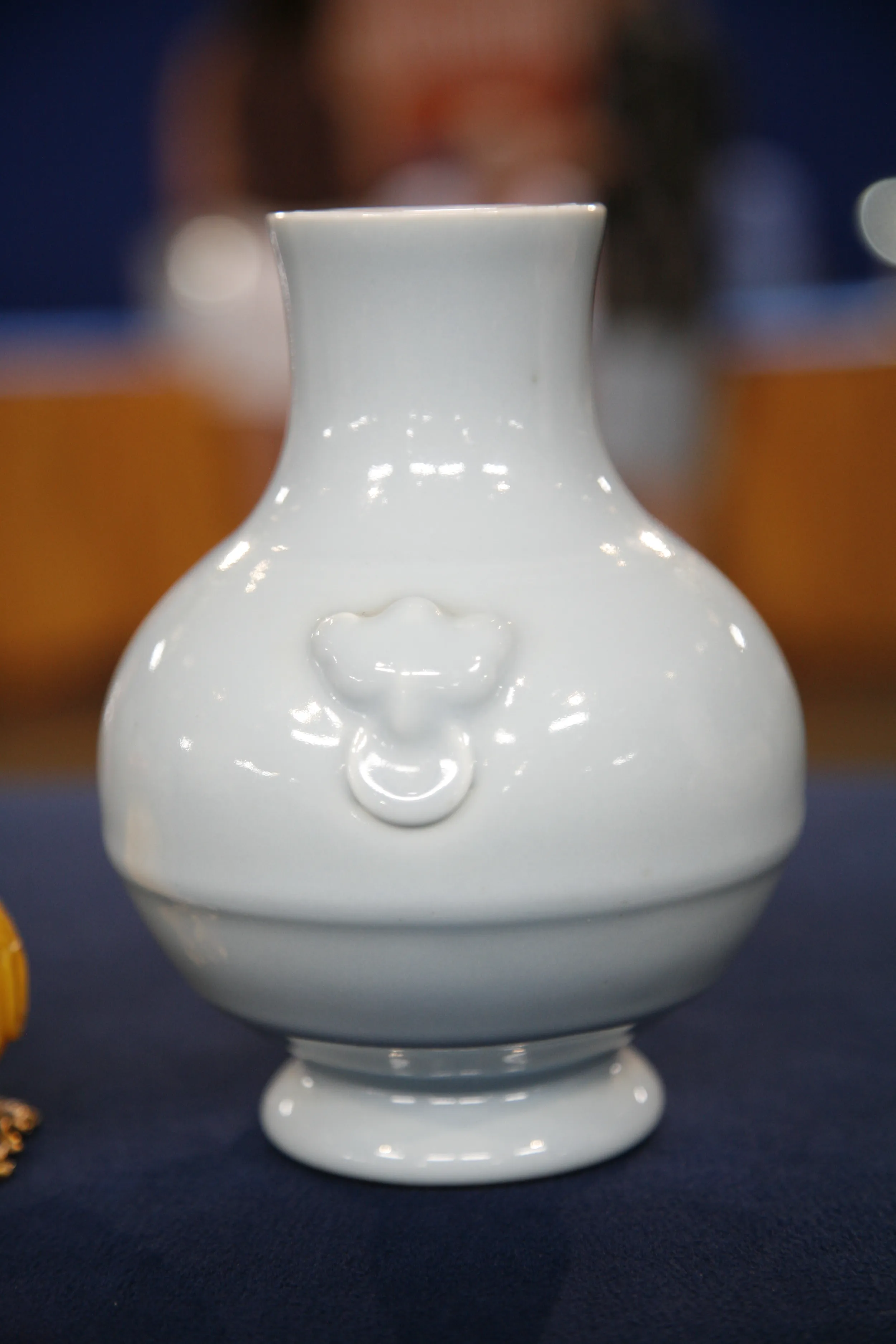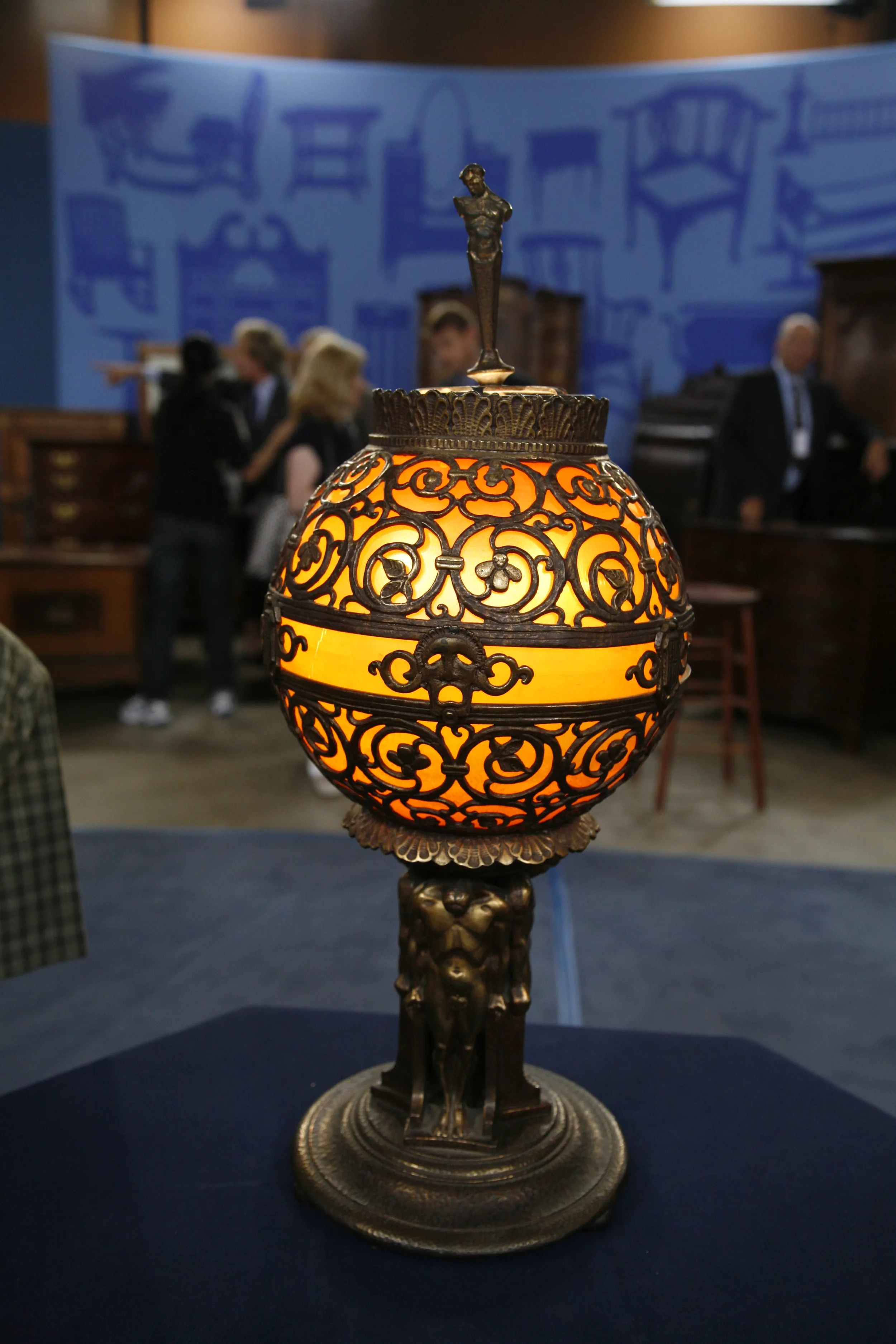GUEST: This is a porcelain snuff bottle that I got online on an auction.
APPRAISER: What did you pay?
GUEST: $75.
APPRAISER: And what do you think it is?
GUEST: I hope it's a real old snuff bottle worth more than what I paid for it.
APPRAISER: Okay.
GUEST: And this... I got as a snuff bottle, or I thought it was a snuff bottle, but when I got it home, we found out it was a match striker.
APPRAISER: Okay, and what did you pay for that?
GUEST: $100. There's a mark on the bottom that says "Yamanaka," so I think it's worth a little more than what we paid for it. Maybe... $300?
APPRAISER: Okay. And then this.
GUEST: And that's a vase that we bought at a local auction, and we paid $200 for it. And I'm just not sure that it's real.
APPRAISER: But it came with a paper that said that it came from a well-known collection.
GUEST: Exactly.
APPRAISER: And on the paper, somebody had dated it to the mid-19th century.
GUEST: Right. And I, I'm hoping that's true.
APPRAISER: Okay. Now, the first two here are snuff bottles. This is enamel-decorated biscuit, which means unglazed porcelain. And it's wonderful
because it's got all these little pierced sections, so it's quite a technically difficult object to make.
GUEST: Mm-hmm.
APPRAISER: The second piece here, which you rightfully said had marks on the bottom and is a match striker, is, in fact-- that's what somebody had
used it as-- but it's made of yellowed glass, nicely carved. The decoration here is quite beautiful. It's got a pair of dragons that are facing each other that are in an archaistic style. And the mark on the bottom, Yamanaka, is really quite informative, because Yamanaka was a major dealer in Chinese and Japanese antiques earlier in the century.
GUEST: Okay.
APPRAISER: So, not everything he sold was real, but a lot of it was. And the quality of this would suggest that it is real. And the last one is this vase here. The shape of it is a shape that developed in the 18th century in China. The color is what's called Clair de Lune, and as we turn it over, we see that it has a six-character mark here for the Yongzheng period. So the question is, does it date to that period or not? So the first piece, the snuff bottle, absolutely is correct. This is actually worth about, for insurance purposes, around $1,000.
GUEST: Wow.
APPRAISER: This, again, as we turn it over and we look at the underside, we see that it has a mark here which says Yamanaka, and the other mark underneath it actually says "sterling silver." So it's gilded silver, which is what you want to see on something like this. Now, it's in good condition. There's a few little hairline cracks up here at the top, but it's not worth what you had hoped it was worth.
GUEST: No?
APPRAISER: I'm so sorry to say. It's worth $3,000.
GUEST: Oh, my gosh. You are kidding. Oh, my gosh.
APPRAISER: (laughing): No, it's wonderful. It's a great snuff bottle, all right? If it weren't cracked, it'd be more.
GUEST: Okay.
APPRAISER: All right, the last one. Simulating an archaic bronze form from the second century. This is not from the Yongzheng period.
GUEST: It's not.
APPRAISER: The mark is written correctly. It's not the right style.
GUEST: Okay.
APPRAISER: The potting and everything suggests that it's closer to the turn of the century. Very fine-quality potting. For insurance purposes, I would think it's worth about $5,000.
GUEST: Oh, my gosh.
APPRAISER: Congratulations.
GUEST: Thank you.

